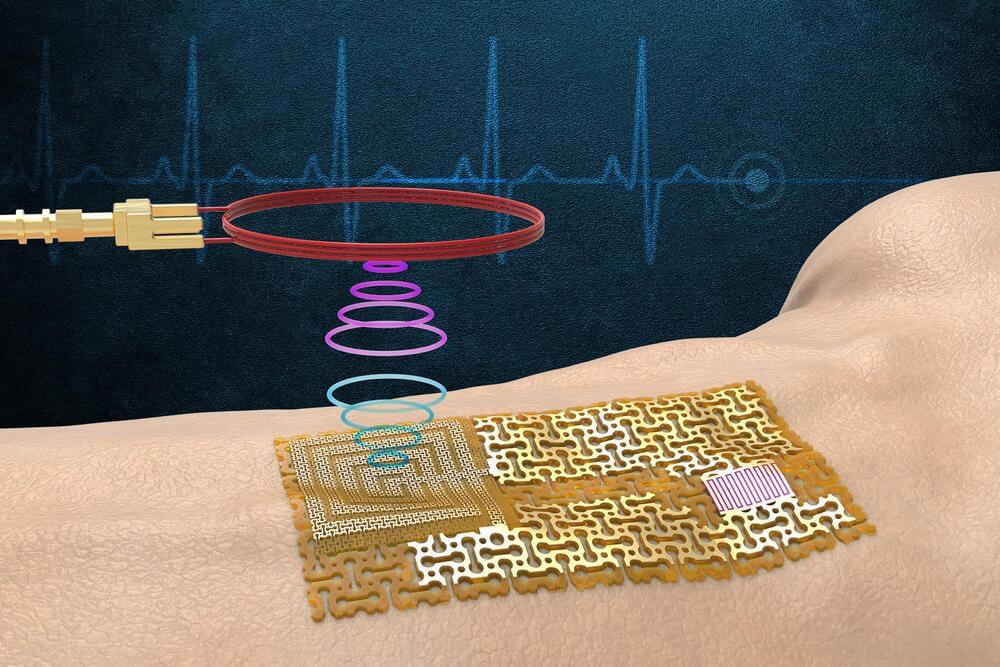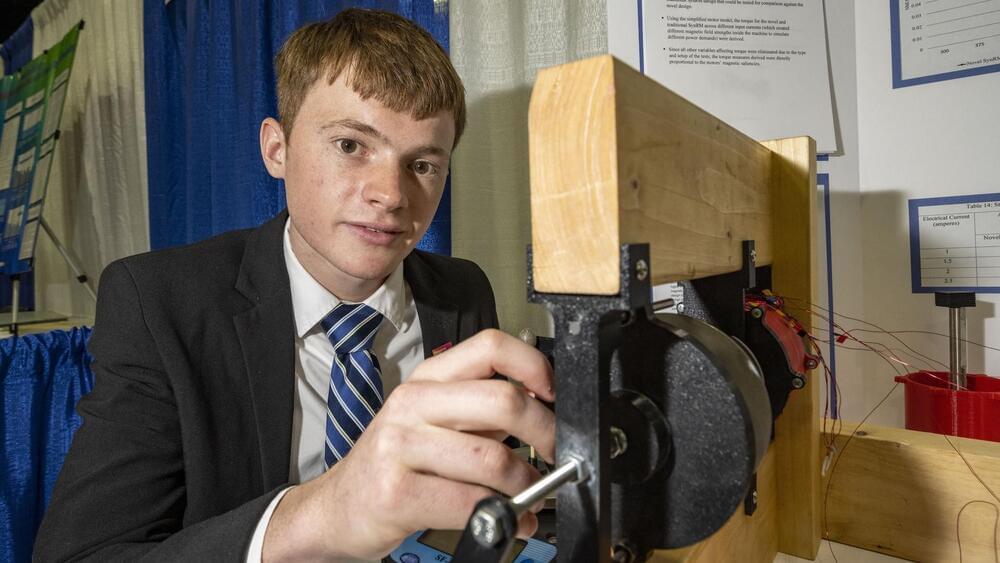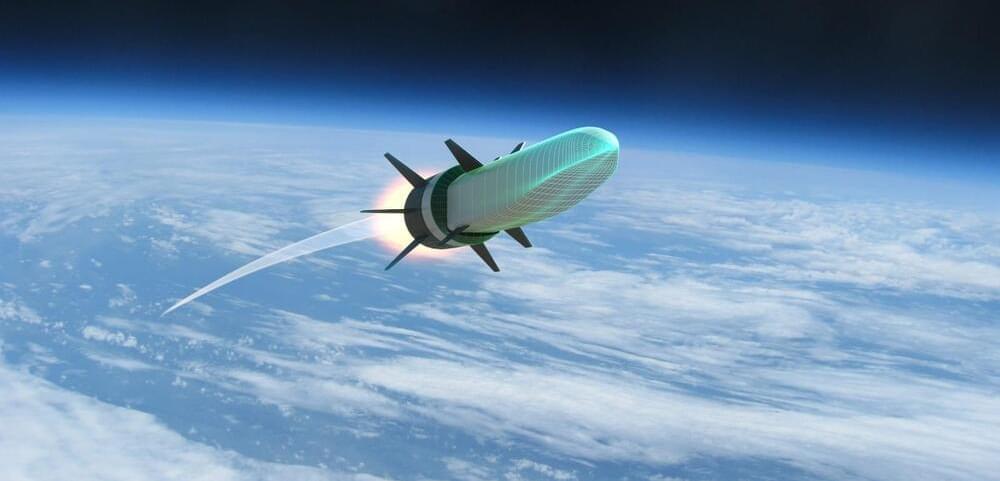Cosmological constraints can be improved by applying machine learning to a combination of data from two leading probes of the large-scale structure of the Universe.
Supercooled water undergoes a liquid–liquid phase transition. The authors show that the two phases have distinct hydrogen-bond networks, differing in their degree of entanglement, and thus the transition can be described by the topological changes of the network.
Scientists have discovered the remarkable impact of reversing a standard method for combatting a key obstacle to producing fusion energy on Earth. Theorists at the U.S. Department of Energy’s (DOE) Princeton Plasma Physics Laboratory (PPPL) have proposed doing precisely the opposite of the prescribed procedure to sharply improve future results.
Tearing holes in plasma
The problem, called “locked tearing modes,” occurs in all today’s tokamaks, doughnut-shaped magnetic facilities designed to create and control the virtually unlimited fusion power that drives the sun and stars. The instability-caused modes rotate with the hot, charged plasma — the fourth state of matter composed of free electrons and atomic nuclei that fuels fusion reactions —and tear holes called islands in the magnetic field that confines the gas, allowing the leakage of key heat.
The world is ‘woefully underprepared’ for a massive volcanic eruption and the likely repercussions on global supply chains, climate and food, according to experts from the University of Cambridge’s Centre for the Study of Existential Risk (CSER), and the University of Birmingham.
Circa 2016 face_with_colon_three
A subset C of infinite-dimensional binary cube is called a perfect binary code with distance 3 if all balls of radius 1 (in the Hamming metric) with centers in C are pairwise disjoint and their union cover this binary cube. Similarly, we can define a perfect binary code in zero layer, consisting of all vectors of infinite-dimensional binary cube having finite supports. In this article we prove that the cardinality of all cosets of perfect binary codes in zero layer is the cardinality of the continuum. Moreover, the cardinality of all cosets of perfect binary codes in the whole binary cube is equal to the cardinality of the hypercontinuum.
The team’s sensor design is a form of electronic skin, or “e-skin” — a flexible, semiconducting film that conforms to the skin like electronic Scotch tape. The heart of the sensor is an ultrathin, high-quality film of gallium nitride, a material that is known for its piezoelectric properties, meaning that it can both produce an electrical signal in response to mechanical strain and mechanically vibrate in response to an electrical impulse.
The researchers found they could harness gallium nitride’s two-way piezoelectric properties and use the material simultaneously for both sensing and wireless communication.
In their new study, the team produced pure, single-crystalline samples of gallium nitride, which they paired with a conducting layer of gold to boost any incoming or outgoing electrical signal. They showed that the device was sensitive enough to vibrate in response to a person’s heartbeat, as well as the salt in their sweat, and that the material’s vibrations generated an electrical signal that could be read by a nearby receiver. In this way, the device was able to wirelessly transmit sensing information, without the need for a chip or battery.
Numbers are an integral part of programming. Hence, programming languages support various datatypes to represent different kinds of numbers and provide various methods to work with them. Each of these datatypes comes with certain limitations on the range of numbers they can represent; while some can represent a small range of numbers, others support a very large range of numbers. Depending on our use case, we can choose from one of them. But none of them have a way to represent infinity.
We often encounter and have to deal with infinity in many real-world scenarios, and so we need a way to represent them in programming languages. In this tutorial, we’ll learn how to represent and work with infinity in Python.
Society for Science.
As per Smithsonian Magazine, his new invention could one day transform the electric vehicle (EV) industry. It is a synchronous reluctance motor with improved performance over previous models.
Skytop Strategies
Posted in business, cybercrime/malcode, government
Please see my article published today in Skytop Strategies. Thanks and have a great weekend!
Essential emerging technology: companies are woefully unprepared by chuck brooks.
Link to article:
Chuck Brooks, President of Brooks Consulting International, is a globally recognized thought leader and subject matter expert on Cybersecurity and Emerging Technologies. LinkedIn named Chuck as one of “The Top 5 Tech People to Follow on LinkedIn.” He was named by Thomson Reuters as a “Top 50 Global Influencer in Risk, Compliance,” and by IFSEC as the “#2 Global Cybersecurity Influencer.” He was featured in the 2020 Onalytica “Who’s Who in Cybersecurity” – as one of the top Influencers for cybersecurity issues. He was also named one of the Top 5 Executives to Follow on Cybersecurity by Executive Mosaic. He is also a Cybersecurity Expert for “The Network” at the Washington Post, Visiting Editor at Homeland Security Today, Expert for Executive Mosaic/GovCon, and a Contributor to FORBES. He has also been a featured author in technology and cybersecurity blogs & events by IBM, AT&T, Microsoft, Cylance, Xerox, Malwarebytes, General Dynamics Mission Systems, and many others. He recently presented to the G20 on Energy Cybersecurity.
Chuck is on the Faculty of Georgetown University where he teaches in the Graduate Applied Intelligence and Cybersecurity Risk Programs. In government, Chuck was a “plank holder” at The Department of Homeland Security (DHS) serving as the first Legislative Director of The Science & Technology Directorate at the Department of Homeland Security. He served as a top Advisor to the late Senator Arlen Specter on Capitol Hill covering security and technology issues on Capitol Hill. He has an M.A from the University of Chicago and a B.A. from DePauw University.
The 4th Industrial Era
The test, conducted in July 2022, featured a Hypersonic Air-breathing Weapon Concept, with minor improvements informed by its earlier successful test in September 2021. Its performance in the most recent test – it dropped from an aircraft and accelerated beyond Mach 5 – met the predictions of the company’s data models.









